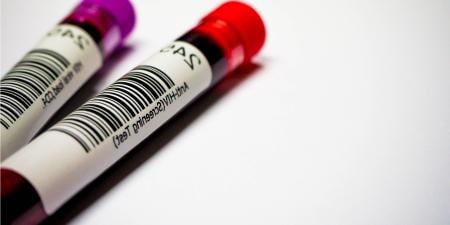Case
Dr. Kelly paced nervously outside her colleague’s door. All during surgery, her mind had been traveling back to the employee health clinic she had visited earlier in the week. Three months prior, she had suffered a needlestick injury while operating on a young boy who was receiving a liver transplant. At first she shrugged it off. She knew the boy was HIV-positive, but she didn’t think seroconversion could happen to her. Occupational health gave her post-exposure prophylaxis, and she thought she would be ok. She felt as if the walls were closing in when she was informed that she had in fact become HIV-positive.
Dr. Kelly knocked on Dr. Chin’s door. She and Dr. Chin had pushed each other through med school and surgery residency, and were now faculty at an academic medical center—Dr. Kelly in pediatric transplant surgery. She trusted Dr. Chin and respected her medical opinion. Dr. Kelly entered and, after exchanging the requisite pleasantries and hospital gossip, she dove straight in.
“Do you remember that needlestick injury I had a few months ago? Well I got my HIV test results back, and I’m positive.”
“What are you going to do now?” Dr. Chin asked crisply, bedside manner not her strong suit.
“Well, I have the name of one of the ID docs here who specializes in HIV. I need to set up an appointment. I guess I will start on antiretrovirals depending on my CD4 counts.”
“No I mean about your career; you won’t be able to operate anymore. Have you told the chief yet? Maybe you could be switched to full-time research faculty.”
Dr. Kelly took a deep breath; this was the very issue she had been struggling with since her diagnosis. She didn’t relish the thought of being the patient, having never taken as much as a single sick day throughout her residency. But, operating was her life. She wasn’t married and had no kids. Being a surgeon had been her dream since she had been a little girl.
“Well, I’ve been reading up on transmission of HIV during surgery,” said Dr. Kelly. “The risk is negligible with proper precautions, which we routinely use.”
“But once you tell your patients’ families, they are going to demand to be treated by a different physician,” said Dr. Chin. “No parents are going to want to expose their kid to an HIV-positive doctor.”
“Well, if the risk of transmitting the virus is so low, do I really need to tell them? It’s not as if we disclose every minor risk when we consent families, so why should I bring it up? My HIV status is none of their business.”
“But aren’t you obliged to inform your patients and their families? After all it could have dire consequences for the kids if they did contract the virus from you?”
Dr. Kelly sighed and thanked Dr. Chin for her time. She retreated to her office to ponder her next course of action.
Commentary
Good ethical decisions begin with good facts. Dr. Kelly just received disturbing news with serious potential implications for her and her patients. She is understandably concerned and seeks support and advice from her trusted colleague. When Dr. Kelly shares her newly discovered HIV status, Dr. Chin responds quickly, bluntly, and unequivocally that this will mean the end of surgical practice. It seems as if she made a diagnosis and recommended a treatment without verifying or gathering any information. Fortunately, Dr. Kelly does not seem to be ill or in immediate jeopardy, so this doesn’t appear to be an emergency that requires an immediate response. Perhaps it’s worth taking some time to review the presumptions that led to what may have been a premature or even incorrect conclusion.
Dr. Kelly has a positive test result for HIV infection and she has at least one risk factor we know about, a needlestick injury from an infected patient. Such exposures, however, rarely lead to infection, with the rate being in the range of 3 per 1,000 events [1]. Also, she has no reported symptoms that would suggest active infection. In light of these facts, a second test to confirm the result would be prudent. While a false positive result would be unusual, it is possible, and could arise from a mislabeled blood specimen or misreported result.
What does Dr. Kelly now need to know and why? For herself, she needs to know whether she has HIV and, if so, the age of her infection. Are there organs or systems affected? What is the status of her immune system? How can she expect this infection to affect her? What are the indications for and the benefits and risks of treatment? In this way, she is no different than others with newly diagnosed HIV infection. But she is different in a significant way. She is a physician, and her profession and role impose a set of duties and obligations. These raise additional questions and concerns. She has accepted the obligation to do no avoidable harm, be as skilled and knowledgeable as she can be, recommend and do what is best for her patients, and be honest with them. Besides these “duties of station” she also has assumed the responsibility and challenge of providing the facts that her patients need in order to give voluntary informed consent for her to perform surgery on them.
With respect to her probable and newly recognized HIV infection, this means Dr. Kelly needs to know if it will impair her ability to perform her tasks safely and competently and whether it will pose any significant risk to her patients now or in the future. If she is or becomes impaired, she should remedy or resolve the impairment. This could mean corrective lenses for decreased vision or drug treatment for infections that compromise other functions. If that’s not possible, she may need to limit or change the kind of surgery she performs. Even if she is unimpaired and asymptomatic, she should be aware of the risk she may pose of transmitting HIV infection to a patient. This will depend both on the status of her infection, e.g., viral load and the likelihood that she will sustain an injury that results in a patient’s exposure to her blood. For significant identified risks, she should eliminate or minimize the risk. This could involve measures like antiretroviral therapy that control infection. It could also mean taking actions to reduce the likelihood of transmission such as using gloves or avoiding high-risk procedures that increase the chance of injury.
Now let’s examine Dr. Chin’s reflex conclusion that Dr. Kelly will need to abandon the surgery she loves. There was an alternative presumption that, if she continued, she would have to disclose her HIV infection status. The latter came with a corollary that when patients’ parents learned her status they would decline to have her operate on their children. To get beyond presumptions and pursue an evidence-based response to her situation, Dr. Kelly should consult quickly with an infectious-disease specialist with expertise in the evaluation of HIV infections. Preferably he or she should also be associated with the hospital’s infection-control program.
While the authenticity and relevant details of Dr. Kelly’s infection remain to be determined, some general observations can be made. Although transmission of HIV from surgeon to patient is possible, it is, in fact, extremely rare. The CDC has estimated that the average risk of sporadic HIV transmission from an HIV-infected surgeon to a patient during an invasive procedure was 2.4 to 24 episodes of transmission per 1 million procedures [2, 3]. The physician’s viral load with or without treatment is a reasonable surrogate for potential infectivity, and is measured well by laboratory tests. The likelihood of actually transmitting an infection relates to the risk of an injury that causes bleeding from the surgeon’s hand during an operation. This is best assessed by experienced surgeons and a review of the infection-control literature. As a rough guide, one would anticipate more such injuries in the course of orthopedic procedures with exposure to sharp bone fragments than in general surgery limited to abdominal organs or soft tissues.
Pending laboratory tests, it seems reasonable to conclude that, without treatment or after effective treatment, Dr. Kelly’s viral load will be low. If colleagues and the infection-control committee believe her surgery practice does not entail high risk, then, if she is otherwise unimpaired, she should be able to resume surgery [4, 5].
Whether Dr. Kelly should disclose her HIV status to her patients is the remaining ethical question. Because of the severity, fear, and uncertainty about transmission and the social stigma associated with the debut of the AIDS/HIV epidemic, we treated this syndrome as exceptional and implemented different approaches to testing, confidentiality, counseling, and infection control. Abundant evidence has accumulated about infectivity, transmission, and the efficacy of treatment and infection-control methods on these factors. It is time to incorporate that evidence into our ethical reasoning.
The risk of HIV acquisition from an infected surgeon appears much lower than the risk of nosocomial bacterial infections, even those with lethal potential. These rates vary by surgeon and institution. It is not the practice, at least not yet, for surgeons to disclose their personal complication or postoperative infection rate to prospective patients. Similarly, most surgeons don’t spontaneously disclose the number of similar cases they do annually, another factor associated with complication rates. Given this practice, it seems inappropriate to require disclosure of a lower-risk condition. That may change, of course, as risk-adjusted institutional and even surgeon-specific data become publicly available. Until then, however, disclosure of HIV status seems inappropriate. It may arouse anxiety unnecessarily and have no practical effect on risk reduction [5]. It may be that some patients would be more fearful of a low risk of perioperative HIV infection than of a serious adverse drug reaction, postoperative hemorrhage, or sepsis, but that is not a strong argument for routine disclosure. It is a reason, though, to answer a direct question truthfully. While there may be an understandable reluctance to answer a patient’s pointed question about his or her surgeon’s HIV status, medical ethics and respect for persons demand an honest answer, just as they would to a question about training, experience, or complication rates.
This case invites us to think, in a patient-centered and generic way, about the risks, real and potential, that surgeons pose to patients and how they should be managed. Known serious risks should absolutely be avoided. Examples include surgeons with highly communicable infectious diseases such as influenza, varicella, and hepatitis B. Abstaining from surgery during such clinical infection is appropriate. Primary prevention via immunization is an even better, more ethically appropriate, and efficient strategy. If the risk is real, but much lower and not reducible by actions available to the surgeon, disclosure may be an appropriate strategy. Examples here would be surgeon or hospital-specific infection rates.
Reasonable and truly informed consent remains a challenge, both as a process and as an outcome. If Dr. Kelly clearly explains to her patients the medical indications, expected outcomes, reasonably anticipated risks and adverse events, benefits, and alternatives, she will be doing an ethically competent job and probably a better one than most of her colleagues.
References
- Cardo DM, Culver DH, Ciesielski CA, et al. A case-control study of HIV seroconversion in health care workers after percutaneous exposure. N Engl J Med. 1997;337(21):1485-1490.
- Bell DM. Human immunodeficiency virus transmission in health care settings: risk and risk reduction. Am J Med. 1992;91(3B):294S-300S.
- Schwaber MJ, Sereti I. Investigation of patients treated by an HIV-infected cardiothoracic surgeon—Israel, 2007. MMWR Morb Mortal Wkly Rep. 2009;57(53):1413-1415.
-
Centers for Disease Control and Prevention. Recommendations for preventing transmission of human immunodeficiency virus and hepatitis B virus to patients during exposure-prone invasive procedures. MMWR Morb Mortal Wkly Rep. 1991;40(RR-8):1-9.
- Reitsma AM, Closen ML, Cunningham M, et al. Infected physicians and invasive procedures: safe practice management. Clin Infect Dis. 2005;40(11):1665-1672.



